The Secret Power of Gratitude
Creating a grateful family culture is a challenge in our entitled, indulgent age. Yet research has confirmed what we intuitively know – Practicing gratitude and being grateful are keys to a happier life.
It’s well worth our consistent and continued effort as parents to model and teach our kids to practice gratitude. Despite knowing how important gratitude is for a healthy mindset, most families still have a long way to go to live as truly grateful people.
As we enter this Thanksgiving month, I am doubling down my efforts to promote gratitude. If we – and our kids – constantly dwell on what’s going wrong in our lives and in the world, we are left feeling anxious, empty, and depressed. But when we take time to count our blessings, we shift our mindsets and become happier, more grateful people. We start seeing more of the good in our lives when we’re looking for it.
For those of you who, like me, want to create a more grateful family, here are five family gratitude practices you might try. If your family is like mine, they will most likely only agree to participate in one or two of these activities, so choose one that resonates for you and go for it! (Just tell them it’s required before they get to eat their turkey!)
#1 Daily Gratitude Sharing
 Having a daily family sharing practice is a great tool for building connection. Sharing one (or more) things we’re grateful for not only makes for a positive conversation but also helps us each – individually – grow our gratitude muscle. Sharing about what we’re grateful for can be at dinner, on the car ride to school, at bedtime, or whatever time works best with your family’s schedule. Just make it a daily habit and everyone will get used to it.
Having a daily family sharing practice is a great tool for building connection. Sharing one (or more) things we’re grateful for not only makes for a positive conversation but also helps us each – individually – grow our gratitude muscle. Sharing about what we’re grateful for can be at dinner, on the car ride to school, at bedtime, or whatever time works best with your family’s schedule. Just make it a daily habit and everyone will get used to it.
When we’ve tried this, it seems to eventually warrant some kind of guidelines about what types of things are “shareable.” For example, being thankful for a particular video game might be appropriate to share once, but it’s best to encourage sharing about people and events (in addition to material things) we are grateful for. Perhaps, if you normally share “Highs and Lows", you can switch to sharing “3 Good Things” just for the month of November?
#2 Gratitude Jar or Board
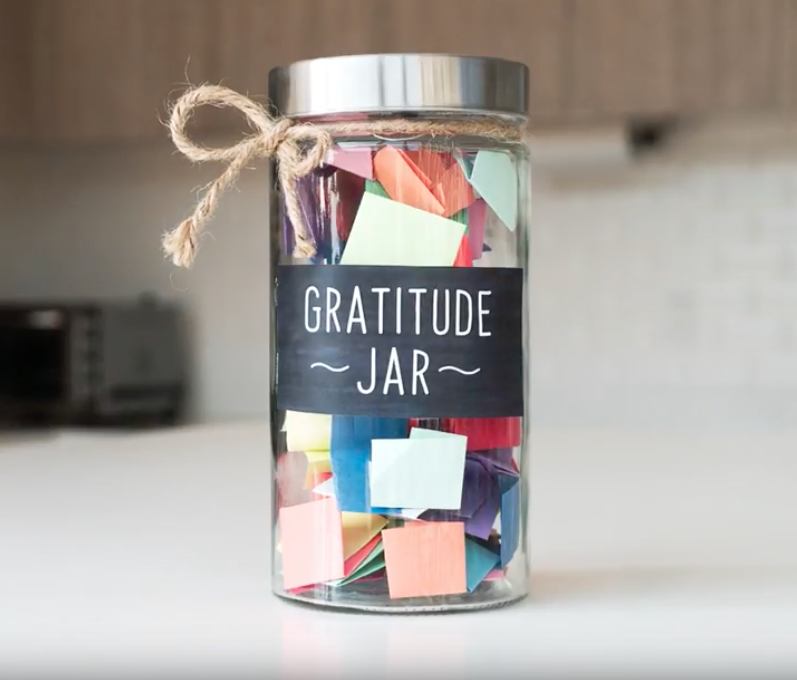 This can be an ongoing family gratitude tradition, possibly kicked off at Thanksgiving and ending on New Year’s Eve. For the jar, people jot down things they are grateful for and put the notes inside. On a specified day (end of the year is good but any time works!), empty the jar and read the notes so the whole family can reflect on individual and group blessings.
This can be an ongoing family gratitude tradition, possibly kicked off at Thanksgiving and ending on New Year’s Eve. For the jar, people jot down things they are grateful for and put the notes inside. On a specified day (end of the year is good but any time works!), empty the jar and read the notes so the whole family can reflect on individual and group blessings.
A bulletin board is a more visual way to show thanks. Simply tack the notes up as you think of things you’re thankful for. For my family, whether doing the jar or the board, having a minimum daily requirement of one note per person helps make it a habit and fill up our jar or board.
#3 Thankful at Thanksgiving
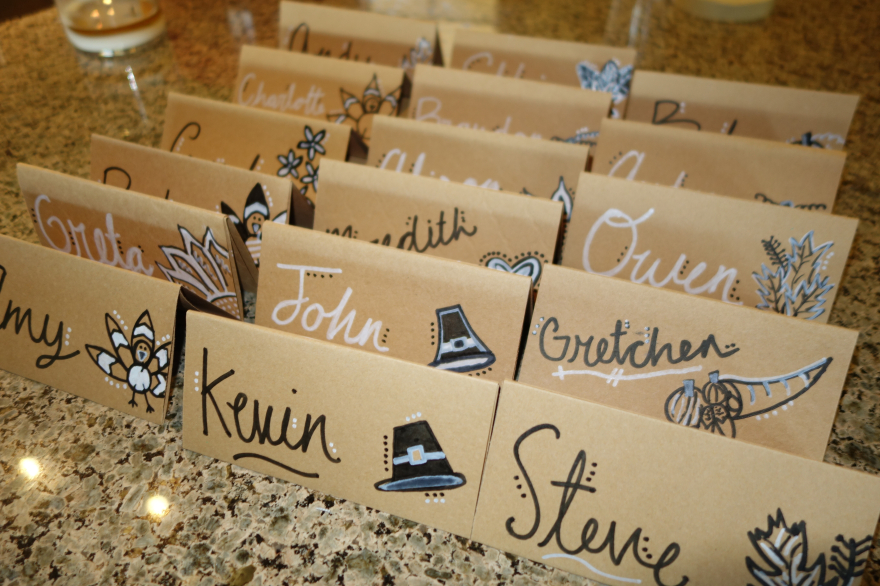 This is one of my favorite activities and something you can do as a family each year. Each family member and visiting friend has an oversized place card at their dining spot. Throughout the afternoon and evening, people write something they appreciate or are grateful for about each person.
This is one of my favorite activities and something you can do as a family each year. Each family member and visiting friend has an oversized place card at their dining spot. Throughout the afternoon and evening, people write something they appreciate or are grateful for about each person.
You can write just a few words or a whole sentence, but each person needs to write on everyone else’s card. These are really fun keepsakes that provide a nice boost to each family member. Another way to do this that ensures it happens is by passing the cards around until each person has signed each other person’s card. It’s helpful if one person keeps time and gives everyone 1 minute for each note.
#4 Gratitude Journal
 Although some people enjoy journaling, it may not be as impactful for some individuals as it is for others. And gratitude journaling is not something that has any benefit if the person writing is feeling resentful.
Although some people enjoy journaling, it may not be as impactful for some individuals as it is for others. And gratitude journaling is not something that has any benefit if the person writing is feeling resentful.
Sharing aloud, at dinner or bedtime (see #1), is ideal for young kids and those who don’t enjoy writing. Perhaps a written alternative would be a family gratitude journal, completed by a parent or designated scribe, where everyone shares what they’re grateful for, and one person writes things down. This could be an alternative to having a family gratitude jar or gratitude board.
I now practice gratitude as part of my daily journaling by listing three things I’m grateful for before I write anything else. Many planners now have space to list what you’re grateful for. I highly recommend this simple practice that gets you focused on the good stuff to start your day!
This could also be a practice you do with a friend by texting each other your “3 Good Things” each day in November!
#5 Giving to Others

Perhaps the best way to promote gratitude in our children and ourselves is giving to or serving others. There are so many opportunities this time of year (and all year long, for that matter) to participate in collection and delivery of food, toys for children, winter coats, and more. There are so many needy people – often right next door to us or in our own families – and reaching out to help others not only makes us more kind and compassionate, but also more appreciative of what we have.


15 More ways to Cultivate an Attitude of Gratitude in Your Children
 1. Say please and thank you.
1. Say please and thank you.
Our manners show that we do not believe we are entitled to anything and that in fact, we appreciate whatever comes our way.
2. Help someone.
This could be your neighbor down the street, grandma, or someone you know who is in a tough spot.
3. Volunteer.
Help out at a homeless shelter, soup kitchen or non-profit.
4. Send out thank you cards.
Express your gratitude for those who have added value to your life.
5. Look for awe-inspiring moments in your day.
If the sunset is particularly beautiful, comment on it. If the sound of the baby’s laughter warms your heart, tell your children. Encourage them to look for their awe-inspiring moments and share them with you.
 6. Share your gratitude at bedtime.
6. Share your gratitude at bedtime.
Take five minutes at the end of the day to ask your child what he is thankful for that day.
7. Share your gratitude at the dinner table.
Take a moment at dinner time to share what you are thankful for. Go around the table, allowing each family member a chance to vocalize their gratitude.
8. Compliment others.
Encourage your children to do the same. Share the things you appreciate about another person.
9. Write a letter.
Encourage your child to write a letter to someone who has touched his life in some way. If he is comfortable, make a visit to that person to read the letter out loud. If not, mail it.
 10. Give someone a gift.
10. Give someone a gift.
Help your child earn the money and purchase the gift. Or make a gift together.
11. Always look for the positive.
Find something positive in frustrating situations and discuss it.
12. Practice turning complaints into praises.
Coach your children to reword their complaints into something that they appreciate instead.
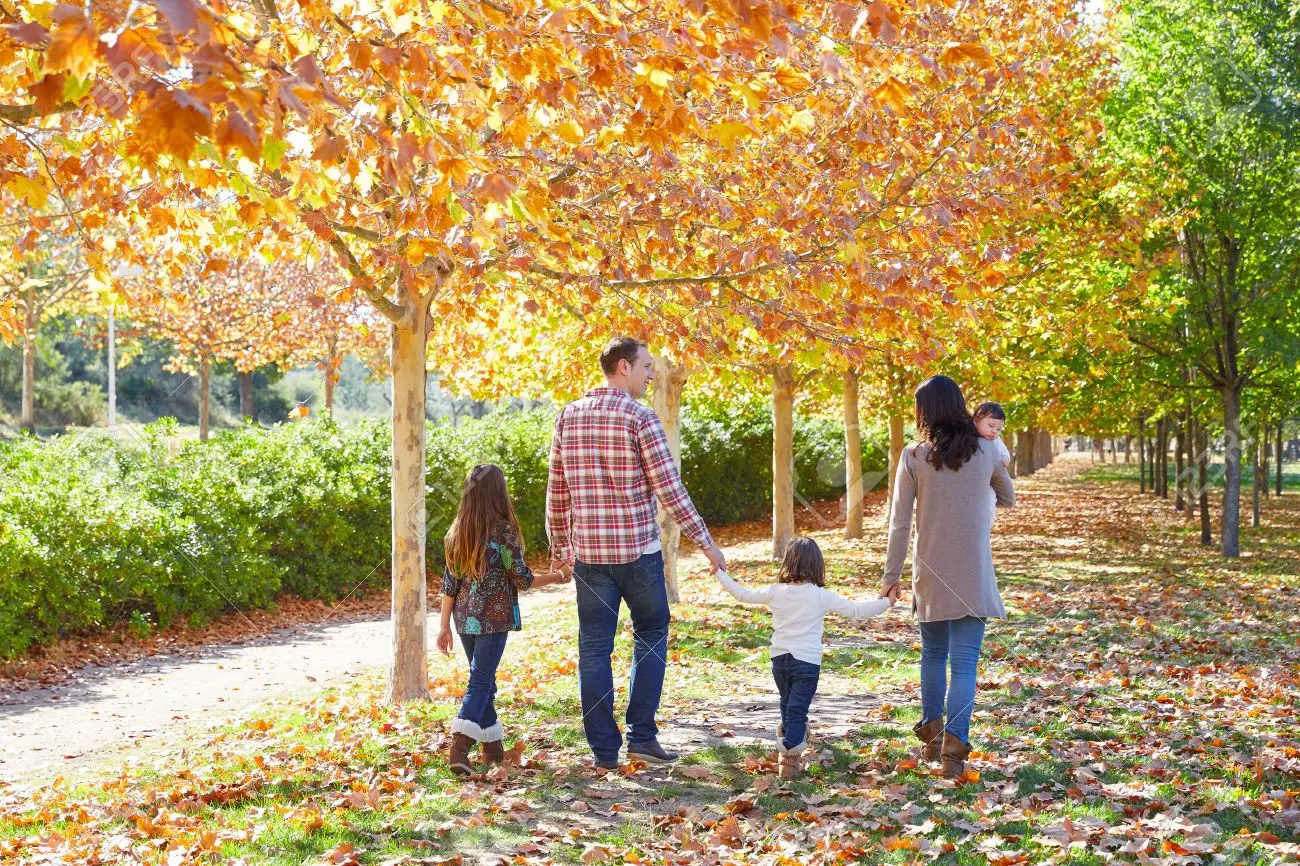 13. Take gratitude walks.
13. Take gratitude walks.
While you walk, look for the simple pleasures in the day, such as the warm sun or the birds singing, and express appreciation for them. Use this time to ask your children what they are grateful for.
14. Ask why.
As your child gets better at expressing gratitude, dig deeper. Ask why he is grateful for something and how it affects his day.
15. Work through envy.
Help your child work through any feelings of jealousy she may have. Envy can come when we are not feeling thankful for what we have, and are focusing instead on what others have.
Gratitude is a skill. An attitude of gratitude is a positive way of looking at life. Gratitude can increase our children’s happiness, teach them to be more empathetic, and help them to be more thankful for everything they have.

COOL RESOURCE
 Turkey Escape Room Game for Thanksgiving Family Fun!
Turkey Escape Room Game for Thanksgiving Family Fun!
Gobble up the fun with this escape room party for kids and families! Can you escape becoming the roasted star of Grandma's Thanksgiving feast? Solve for codes using clues on the wall, the floor... and you might need grade-schoolers to help solve by making a good old woven placemat! Anticipation and excitement build as players use codes to open envelopes and reveal new clues to help you fly the coop before time runs out! Game play is about 60 minutes and is ideal for 7 players, but larger groups can simply print it out twice, and even race each other! Ages 8+ is ideal, hints and detailed solutions are included to help younger players and make game play stress-free. You might even discover Grandma's Perfect Pumpkin Pie recipe! A fun challenge at the end makes this adventure really fly! Dare to enter the room?
What happened?
You’re a turkey. And, sadly for you, it is Thanksgiving Day. You’re in a secured storage unit and see a safe and corn field calendar in the room. In an hour, Grandma will make you the seasoned, stuffed and roasted star of her Thanksgiving feast! Is there anything in this storage unit that can help you get the code on the door lock before your time is up? $13.99 downloadable from Etsy


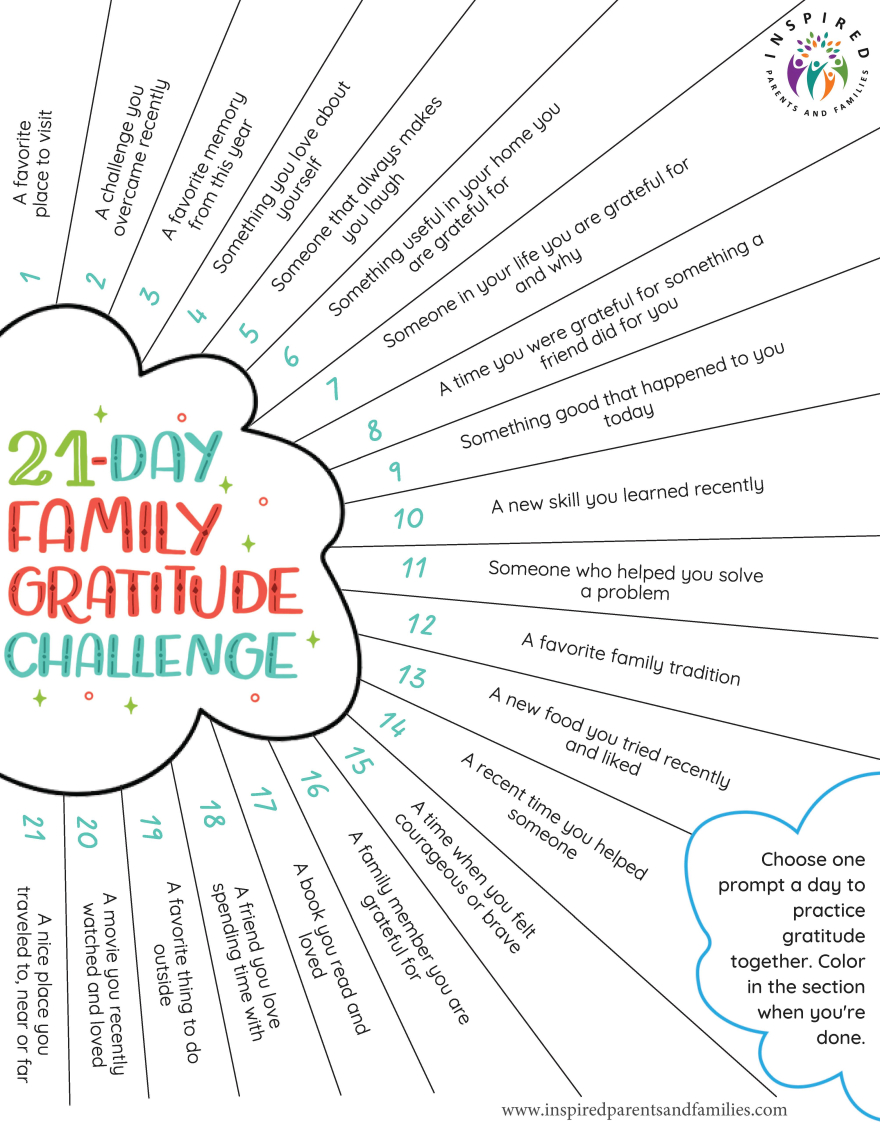

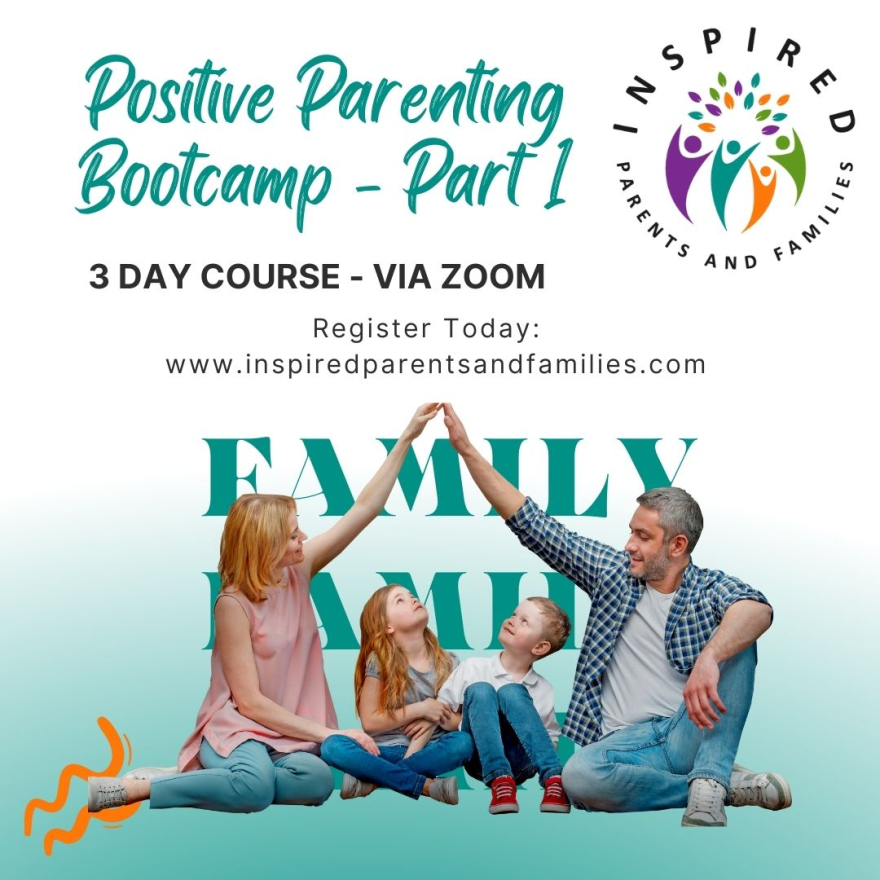
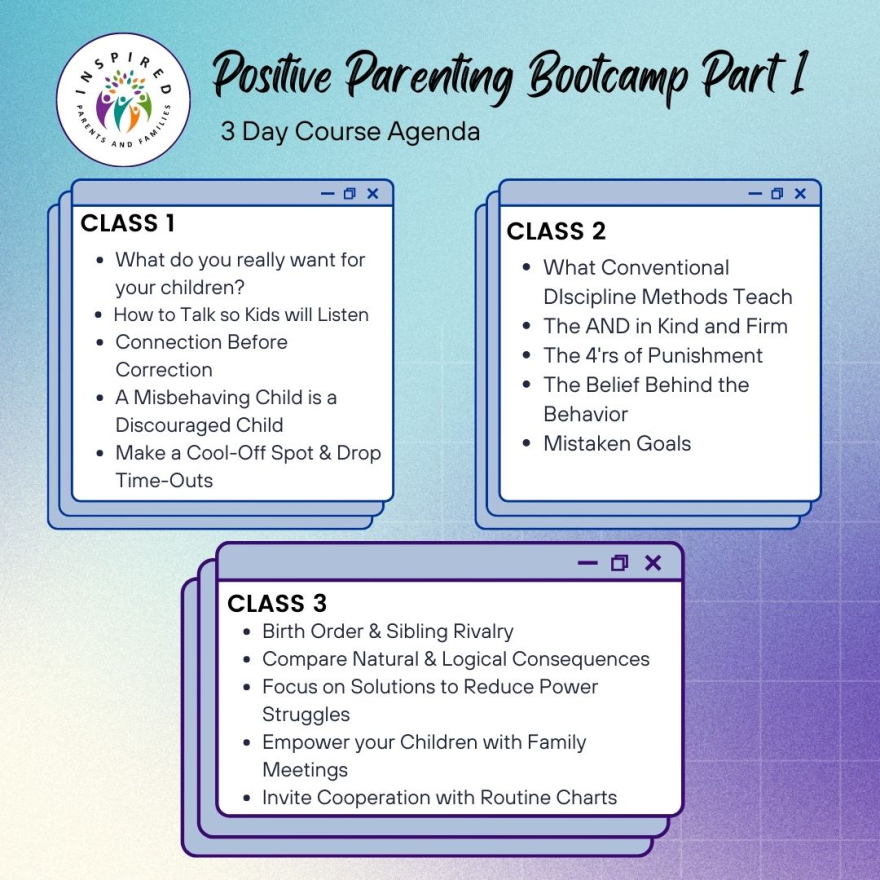 Parents and caregivers will learn long term solutions for raising kids to feel “I am capable, I can contribute, and I can use my personal power in useful ways to improve my life and the lives of others!” Positive Discipline teaches long term parenting skills that will encourage children to think for themselves, become more responsible and have a greater respect for themselves and others. Feel supported while learning some non-punitive, respectful methods that will incorporate kindness and firmness into your relationship with your children. Get to the core of your children's misbehavior, practice encouraging tools and gain a sense of accomplishment.
Parents and caregivers will learn long term solutions for raising kids to feel “I am capable, I can contribute, and I can use my personal power in useful ways to improve my life and the lives of others!” Positive Discipline teaches long term parenting skills that will encourage children to think for themselves, become more responsible and have a greater respect for themselves and others. Feel supported while learning some non-punitive, respectful methods that will incorporate kindness and firmness into your relationship with your children. Get to the core of your children's misbehavior, practice encouraging tools and gain a sense of accomplishment.
 Parent coaching is designed to provide insight, help parents discover newfound energy in their parenting, develop an appreciation for what they have and who they are, and create sustainable ways to achieve their vision or dream for their family. Different than therapy, coaching’s unique methodology allows the coach to provide support as a cheerleader, guide, and mirror. Coaching is perfect for helping parents who are feeling overwhelmed, parents who are baffled by their children’s behavior, parents who are looking to bolster their parenting “tool box,” and parents who simply want to take their family’s life from good to great. Interested to see if Coaching would be a good fit for your family? Click below to schedule a complimentary discovery call.
Parent coaching is designed to provide insight, help parents discover newfound energy in their parenting, develop an appreciation for what they have and who they are, and create sustainable ways to achieve their vision or dream for their family. Different than therapy, coaching’s unique methodology allows the coach to provide support as a cheerleader, guide, and mirror. Coaching is perfect for helping parents who are feeling overwhelmed, parents who are baffled by their children’s behavior, parents who are looking to bolster their parenting “tool box,” and parents who simply want to take their family’s life from good to great. Interested to see if Coaching would be a good fit for your family? Click below to schedule a complimentary discovery call.